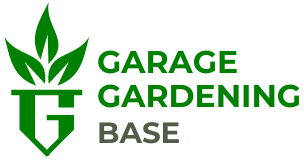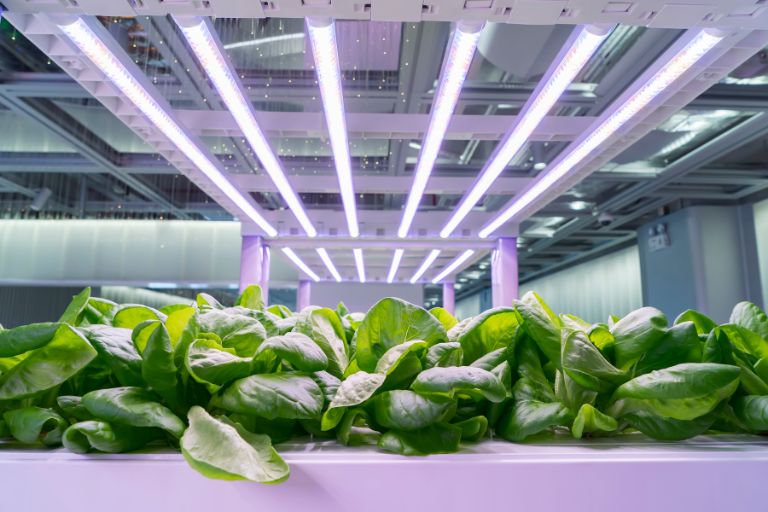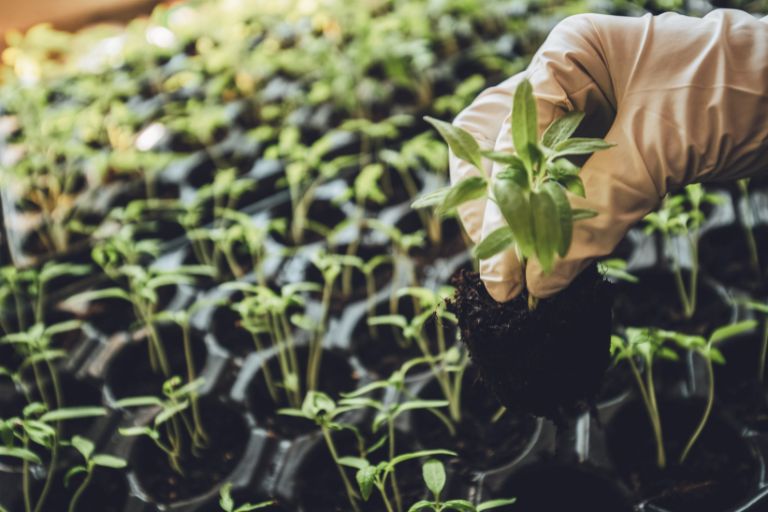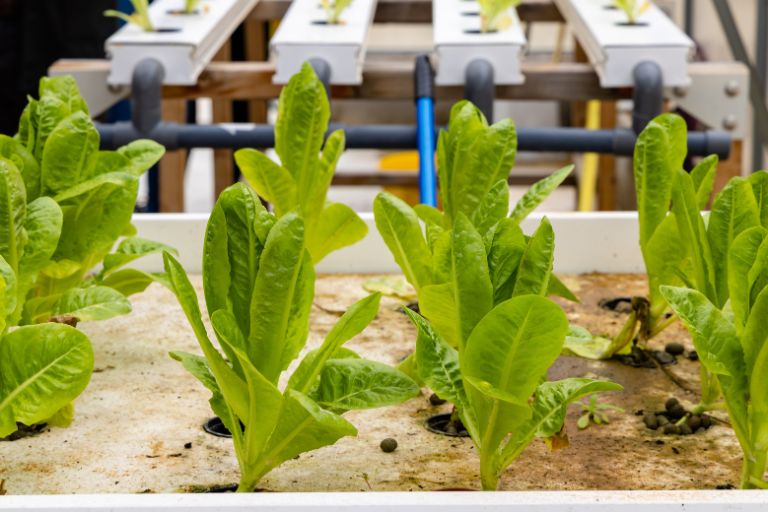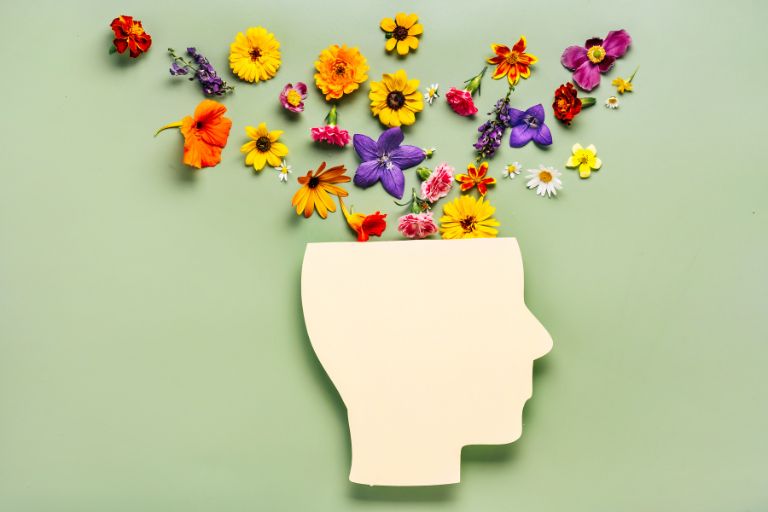Bringing the Tropics Home: A Guide to Growing Exotic Plants Indoors
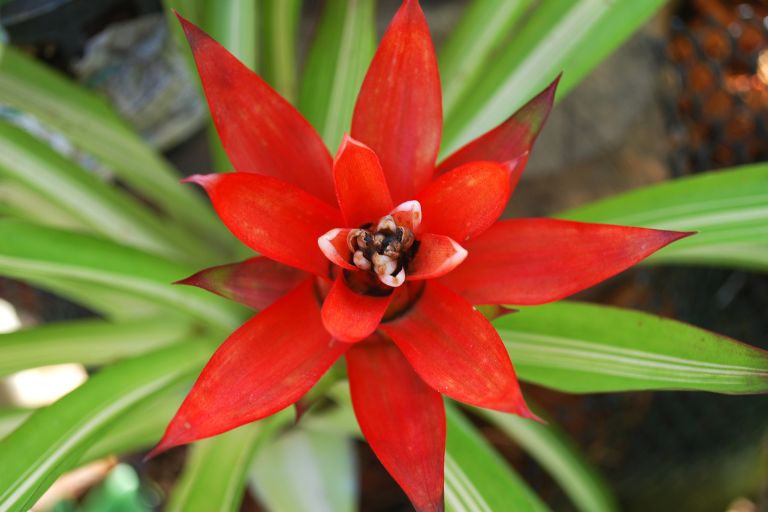
Imagine lush foliage reminiscent of distant tropical paradises, vibrant flowers that evoke the colours of faraway landscapes and the intoxicating scents of exotic flora filling your living space. Welcome to the enchanting world of exotic indoor plants.
While many may associate exotic plants with distant jungles or botanical gardens, the truth is that with a little knowledge and care, you can bring the allure of the tropics right into your own home. Whether you’re an experienced indoor gardener looking to expand your botanical repertoire, or a novice eager to embark on a new green adventure, growing exotic plants indoors is an exciting way to transform your living space into a vibrant oasis of natural beauty.
In this comprehensive guide, we’ll delve into the fascinating world of growing exotic plants indoors, covering everything from selecting the right specimens to creating optimal growing conditions, overcoming common challenges and seamlessly integrating these botanical treasures into your interior design. Get ready to embark on a journey that will not only enrich your surroundings, but also nourish your soul with the incomparable splendour of exotic flora. Let’s dive in and discover the secrets to cultivating your very own slice of paradise, right in the comfort of your own home.
Introduction
Exotic plants, in the context of indoor gardening, are typically species that originate from tropical or subtropical regions of the world and possess distinctive characteristics not commonly found in native or widely cultivated plants. These plants often have lush foliage, vibrant flowers, unique shapes or intriguing textures that set them apart and add an air of intrigue and fascination to indoor spaces.
What defines an exotic plant can vary depending on your geographical location and familiarity with different species. In general, however, exotic plants are characterised by their ability to evoke a sense of wonder and transport people to distant lands through their aesthetic appeal and botanical diversity.
The appeal of growing exotic plants indoors lies in the ability to create a captivating indoor landscape that mimics the beauty and diversity of natural ecosystems from around the world. Unlike traditional houseplants, which may be more common and familiar, exotic plants offer the chance to create a truly unique and immersive indoor environment that reflects the splendour of faraway destinations.
As well as their aesthetic appeal, exotic plants bring a sense of novelty and discovery to indoor gardening. With a vast array of species to choose from, each with their own unique characteristics and care requirements, exotic plant cultivation offers endless opportunities for learning and experimentation. Whether it’s mastering the art of replicating tropical microclimates, discovering the cultural significance of different plant varieties, or simply admiring the stunning array of colours and shapes, growing exotic plants indoors offers a rich and rewarding voyage of discovery for plant enthusiasts of all levels.
In addition, incorporating exotic plants into indoor spaces can serve as a form of escapism, providing a tranquil retreat from the hustle and bustle of everyday life. The lush foliage, vibrant flowers and evocative scents of exotic plants can help to create a calming and rejuvenating atmosphere, promoting a sense of relaxation, connection with nature and overall wellbeing in the home.
At its core, the appeal of growing exotic plants indoors lies in the opportunity to create a truly unique and immersive indoor garden that will transport you to distant lands, inspire curiosity and wonder, and enhance the beauty and ambience of your living environment. Whether you’re drawn to the exotic allure of tropical palms, the delicate beauty of orchids or the architectural elegance of succulents, there’s an exotic plant out there waiting to be discovered and nurtured in your own home.
Selecting the Right Plants
When choosing exotic plants to grow indoors, it’s important to consider factors such as light requirements, humidity levels and space constraints to ensure optimal growth and health. Below are some popular exotics that are well suited to the indoor environment, along with their specific care requirements:
Monstera deliciosa (Swiss cheese plant)
Light requirements – Thrives in bright, indirect light but can tolerate medium light. Position near a north or east facing window for optimum growth.
Humidity – Prefers moderate to high humidity. Regular misting or placing a humidifier nearby can help maintain humidity.
Space constraints – Although Monstera deliciosa can grow quite large, it can be trained to grow compactly with proper support, making it suitable for medium indoor spaces. Alternatively, smaller varieties such as Monstera adansonii or Monstera obliqua are available for those with limited space.
Ficus lyrata (Fiddle Leaf Fig)
Light requirements – Needs bright, indirect light. Avoid direct sunlight as it can scorch the leaves. Place near a south or west facing window with sheer curtains to filter light.
Humidity – Prefers moderate humidity. Regular misting or use of a humidifier can help prevent leaf loss.
Space constraints – Fiddle-leaf figs can become quite large if left unchecked, so they are best suited to larger indoor spaces where they have room to spread out. Regular pruning can help control size and shape, making them adaptable to different room sizes.
Philodendron spp. (Heartleaf Philodendron, Split-leaf Philodendron)
Light requirements – Tolerates low to bright indirect light. Variegated varieties may need slightly brighter light. Position in filtered sunlight or away from direct sunlight.
Humidity – Adaptable to a wide range of humidity levels, but thrives in moderate to high humidity. Regular misting or the use of a humidifier can help to create the ideal environment.
Space requirements – With their compact growth habit, heart-leaf and split-leaf philodendrons are perfect for smaller indoor spaces. They can be grown in hanging baskets, on shelves or trained to climb a support structure.
Calathea spp. (Calathea, Prayer Plant)
Light requirements – Prefers bright indirect light. Avoid direct sunlight to prevent leaf scorching. Place in filtered or indirect sunlight.
Humidity – Requires high humidity to thrive. Regular misting, use of a humidifier or grouping of plants can help increase humidity.
Space constraints – Calatheas are ideal for small to medium indoor spaces due to their compact growth habit. They can be placed on table tops, shelves or used as an understory in larger arrangements.
Bromeliads
Light requirements – Thrive in bright, indirect light but can tolerate lower light. Position near a window with filtered sunlight or under artificial grow lights.
Humidity – Prefer moderate to high humidity. Regular misting and occasional watering of the centre cup can help maintain humidity.
Space constraints – Bromeliads come in a variety of sizes, from compact tabletop varieties to larger specimens that can be displayed on the floor. They are adaptable to a range of indoor spaces and can be used in a variety of decorative arrangements.
Orchids (Phalaenopsis, Oncidium, Dendrobium, etc.)
Light requirements – Typically prefer bright indirect light. Different species may have different light requirements, so it’s important to research the specific needs of each orchid.
Humidity – Prefer moderate humidity. Regular misting and the use of a humidifier can help maintain humidity levels.
Space constraints – Orchids are well suited to smaller indoor spaces, with many varieties available in compact sizes. They can be displayed on windowsills, mounted on surfaces or arranged in hanging baskets to maximise space.
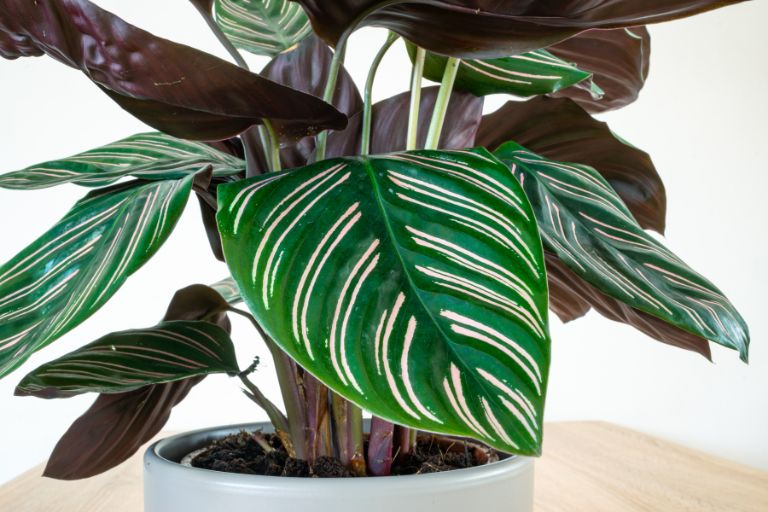
Optimal Growing Conditions
Creating the ideal environment for exotic plants indoors involves carefully managing lighting, temperature, humidity and soil conditions to mimic their natural habitat. Below you’ll find some advice on how to set up each of these components:
Lighting
Natural light – Place your plants near windows that receive bright, indirect sunlight. South or east facing windows are generally ideal as they provide plenty of light without the intensity of direct sunlight. Rotate your plants regularly to ensure even light distribution and to prevent them from leaning or stretching towards the light source.
Supplemental lighting – In rooms with limited natural light, supplement with artificial grow lights. LED grow lights are energy efficient and emit the full spectrum of light required for plant growth. Position the lights above the plants and adjust the height according to the light intensity requirements of your specific plants.
Temperature
Ideal range – Most exotics thrive in temperatures between 18°C and 27°C (65°F and 80°F) during the day and slightly cooler temperatures at night. Avoid placing plants near drafts from doors, windows or heating/cooling vents as sudden temperature changes can stress plants.
Seasonal adjustments – In colder months, ensure plants are protected from cold draughts and consider using a humidifier to prevent dry air. In warmer months, ensure adequate ventilation to prevent overheating and consider using fans to improve air circulation.
Humidity
Increase humidity – Exotic plants, especially those native to tropical regions, require higher humidity levels than those typically found indoors. Increase humidity by misting plants regularly with room temperature water or by placing a tray of water and pebbles under the plant’s container. Grouping plants together can also create a microclimate with higher humidity levels.
Monitor humidity – Consider using a digital hygrometer to monitor your indoor humidity levels. Aim for humidity levels between 50% and 60% for most exotics, adjusting as needed based on the specific requirements of each species.
Soil requirements
Well-draining mix – Use a well-draining potting mix formulated specifically for indoor plants. A mix containing ingredients such as peat moss, perlite and composted bark will help prevent waterlogged soil, which can lead to root rot.
Aerate – Make sure the soil is loose and aerated to encourage healthy root growth. Avoid compacting the soil around plant roots as this can impede drainage and oxygen uptake.
Fertilising – Exotic plants usually benefit from regular fertilisation during the growing season. Use a balanced, water-soluble fertiliser diluted to half strength every 2-4 weeks, following the manufacturer’s recommendations.
Overcoming Common Challenges
Growing exotic plants indoors can be immensely rewarding, but it’s not without its challenges. Below are some of the most common problems encountered when growing exotic plants indoors, along with troubleshooting tips:
Pests
Common pests
Indoor exotics are susceptible to pests such as aphids, spider mites, mealy bugs and scale insects.
Troubleshooting tips
– Check your plants regularly for signs of pests, including distorted leaves, sticky residue (honeydew) or visible insects.
– Treat infestations immediately with natural or chemical remedies such as insecticidal soap, neem oil or horticultural oil, following instructions carefully.
– Isolate affected plants to prevent the spread of pests to other plants in your collection.
– Maintain good plant hygiene by regularly cleaning leaves, removing dead foliage and avoiding over-watering as pests are attracted to weakened or stressed plants.
Diseases
Common diseases
Exotic plants can be susceptible to fungal diseases such as root rot, powdery mildew and leaf spot.
Troubleshooting tips
– Ensure proper drainage by using well-draining soil and pots with drainage holes to prevent waterlogging and root rot.
– Avoid overhead watering as excess moisture on foliage can encourage fungal growth. Water plants at the base to keep leaves dry.
– Provide adequate air circulation around plants to reduce humidity levels and prevent the development of fungal diseases.
– If disease is detected, remove and destroy affected plant parts and treat with fungicides if necessary, following the manufacturer’s instructions.
Environmental Stressors
Common stressors
Indoor exotics can be stressed by factors such as inadequate lighting, temperature fluctuations, low humidity and improper watering.
Troubleshooting tips
– Adjust lighting conditions by adding artificial lighting or moving plants to a brighter location if they show signs of light deficiency, such as pale or leggy growth.
– Maintain consistent temperatures within the recommended range for each plant species and protect them from draughts or extreme temperature fluctuations.
– Increase humidity using methods such as misting, grouping plants or using a humidifier, especially during the dry winter months.
– Monitor watering habits carefully to ensure that plants are neither overwatered nor underwatered. Use the ‘finger test’ to check soil moisture before watering and adjust frequency according to individual plant needs.
Nutritional deficiencies
Common deficiencies
Exotic plants may show symptoms of nutrient deficiency such as yellowing leaves, stunted growth or poor flowering.
Troubleshooting tips
– Use a balanced, water-soluble fertilizer formulated for indoor plants to provide essential nutrients regularly during the growing season.
– Follow the recommended dosage and application frequency on the fertilizer label and avoid over-fertilising, which can lead to salt build-up and root damage.
– Monitor plant health regularly and adjust fertilisation as needed based on observed symptoms or growth patterns.
Maintenance and Care Tips
Below you’ll find comprehensive advice on watering, fertilising, pruning and repotting exotic plants to ensure their health and longevity:
Watering
Advice
– Watering requirements vary between different exotic plant species, so it’s important to research the specific needs of each plant.
– Check the soil moisture before watering by inserting your finger about an inch into the soil. If it feels dry, it’s time to water.
– Water thoroughly until water runs out of the bottom of the pot, making sure the entire root ball is moistened.
– Allow the top inch or two of soil to dry out between waterings to avoid overwatering, which can cause root rot.
– Adjust watering frequency according to environmental factors such as temperature, humidity and seasonal changes.
Tips
– Use room temperature water to avoid shocking plant roots.
– Avoid watering plants from above as this can cause fungal disease and damage delicate foliage.
– Consider using a moisture meter to accurately assess soil moisture levels, especially for plants with sensitive watering needs.
Fertilising
Advice
– Feed exotic plants during the growing season (spring and summer) when they are actively growing and will benefit most from nutrient supplementation.
– Use a balanced, water-soluble fertilizer specifically formulated for indoor plants, following the manufacturer’s instructions for dilution and frequency of application.
– Apply fertiliser to moist soil to avoid root burn and avoid fertilising plants that are stressed or newly repotted.
– Consider using organic or slow-release fertilizers for a more gradual and sustained nutrient release.
Tips
– Monitor plant growth and health to determine if fertiliser adjustments are needed. Reduce or stop fertilising during the dormant winter months when plants are not actively growing.
Prune
Advice
– Regular pruning will help maintain the health, shape and appearance of exotics, encourage vigorous growth and prevent overcrowding.
– Use clean, sharp pruning shears or scissors to make clean cuts and disinfect tools between plants to prevent the spread of disease.
– Remove dead, damaged or diseased foliage as soon as you notice it to prevent the spread of disease and improve overall plant health.
– Prune back leggy growth or overcrowded branches to encourage branching and promote a fuller, more compact plant shape.
Tips
– Prune selectively and conservatively, avoiding excessive removal of healthy foliage to prevent stress and shock to the plant.
– Inspect plants regularly during pruning for signs of pests or disease and take appropriate action if problems are detected.
Repotting
Advice
– Repot exotic plants when they outgrow their current containers or when the soil becomes compacted, preventing adequate drainage and root aeration.
– Choose a slightly larger pot with drainage holes and use a well-draining potting mix formulated for houseplants.
– Carefully remove the plant from its current pot, loosen the roots and place the plant in the new pot at the same depth as before, adding fresh soil around the root ball.
– After repotting, water the plant thoroughly and allow it to settle into its new container before resuming regular care.
Tips
– Repot plants in spring or early summer when they are actively growing and better able to recover from transplant shock.
– Avoid repotting plants unnecessarily or too frequently as this can cause stress and disrupt growth patterns.
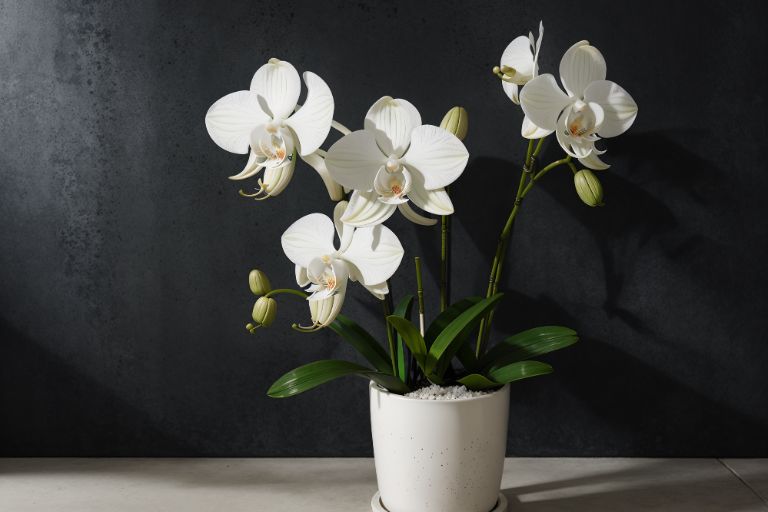
Enhancing Indoor Spaces
Incorporating exotic plants into your interior design offers endless opportunities to add unique charm, vibrant colour and a touch of natural beauty to your space. Below are some creative ideas for showcasing exotic plants in your home:
Container Choices
Statement Planters – Opt for bold and eye-catching planters that complement the exotic nature of your plants. Consider ceramic pots with intricate patterns, metallic finishes or vibrant colours to add visual interest.
Hanging baskets – Hang exotic plants in woven baskets or macramé plant hangers for a bohemian-inspired display. This adds texture and dimension to your room while maximising vertical space.
Terrariums – Create miniature tropical landscapes in glass terrariums filled with exotic plants, moss, rocks and decorative elements. These self-contained ecosystems add a whimsical touch to any room.
Vintage containers – Repurpose vintage containers such as brass or copper pots, antique boxes or decorative urns to add character and charm to your plant displays.
Arrangement ideas
Create a jungle corner – Group several exotic plants in a corner of your room to create a lush indoor jungle. Mix different textures, shapes and heights to create visual interest and depth.
Vertical gardens – Install a vertical garden or living wall with a variety of exotic plants to make a bold statement and maximise space in smaller rooms. Use modular planters or wall shelving to create a customisable display.
Tabletop displays – Arrange a collection of exotic plants on coffee tables, end tables or shelves to add a pop of greenery to your living spaces. Mix and match different plant sizes and shapes for a dynamic and eclectic look.
Floating shelves – Install floating shelves at different heights and display exotic plants in decorative pots to create a floating garden effect. This adds visual interest while keeping surfaces uncluttered.
Complementary accessories
Botanical prints – Decorate your walls with botanical prints or artwork featuring exotic plants to complement your indoor garden theme. Choose vibrant and colourful prints to add a lively touch to your decor.
Natural textures – Incorporate natural textures such as rattan, jute, bamboo or wood into your decor through furniture, rugs, baskets and decorative accents. These textures enhance the tropical feel and create a cohesive look.
Accent pillows and throws – Add throw pillows and throws in botanical prints, tropical motifs or lush greens to bring the exotic plant theme into your seating areas.
Accessorise with plants – Enhance your plant displays with decorative accessories such as ceramic figurines, shells, crystals or woven baskets to add personality and visual interest.
Sustainability and Eco-Friendly Practices
Practicing sustainability in indoor gardening not only reduces environmental impact, but also promotes healthier plants and a greener home environment. Below are some sustainable practices for indoor gardening:
Use organic fertiliser
– Choose organic fertilisers made from natural ingredients such as compost, seaweed extract, bone meal or worm castings. These fertilisers provide plants with essential nutrients without the use of synthetic chemicals.
– Organic fertilisers improve soil structure and encourage beneficial microbial activity, leading to healthier plants and improved soil fertility over time.
– Consider making your own compost from kitchen scraps, garden waste and plant cuttings to create a nutrient-rich soil amendment for your indoor garden.
Repurpose containers
– Instead of buying new plant pots, repurpose containers and household items to use as planters. This could include old jars, tin cans, wooden boxes or ceramic bowls.
– Get creative with your choice of containers by upcycling items such as tea cups, colanders, wine bottles or shoe organisers to add a unique touch to your indoor garden.
– Repurposing containers not only reduces waste and saves money, but also adds character and personality to your plant displays.
Conserve water
– Practice water conservation by using efficient irrigation techniques, such as watering from the bottom or using a drip irrigation system. This reduces water waste by delivering water directly to the plant roots where it’s needed most.
– Collect and reuse water from a variety of sources, such as rainwater, dehumidifier condensate or residual water from steaming vegetables, to water your plants.
– Consider installing a water-efficient irrigation system with features such as moisture sensors, timers and drip emitters to minimise water use and maintain optimum soil moisture levels.
Choose sustainable plant species
– Select indoor plants that are well suited to your local climate and environmental conditions to reduce the need for excessive watering, heating or cooling.
– Choose native or drought-tolerant plant species whenever possible, as they require less water and maintenance than exotic or high-maintenance plants.
– Research the environmental impact of different plant species before purchasing to ensure they are sustainably sourced and ethically harvested.
Practice Integrated Pest Management (IPM)
– Instead of relying on chemical pesticides, use IPM techniques to manage pests in your indoor garden. This includes using natural predators, such as ladybugs or predatory mites, to control pest populations, as well as physical methods, such as hand-picking pests or using insecticidal soap.
– Encourage biodiversity in your indoor garden by incorporating companion plants that attract beneficial insects and repel pests, such as marigolds, lavender or basil.
Adopting sustainable indoor gardening practices not only benefits the environment, but also improves the health and vitality of your houseplants while promoting a more eco-conscious lifestyle. By incorporating organic fertilisers, reusing containers, conserving water and choosing sustainable plant species, you can create a thriving indoor garden that is in harmony with nature and promotes environmental stewardship.
Sustainable indoor gardening also offers a unique opportunity to connect with the natural world and cultivate a deeper appreciation for the beauty and resilience of plant life. Whether you’re an experienced gardener or just beginning your indoor gardening journey, adopting sustainable practices not only reduces your carbon footprint, but also contributes to a more sustainable and resilient ecosystem within your home.
As we continue to prioritise sustainability in all aspects of our lives, indoor gardening offers a tangible and rewarding way to make a positive impact on the planet. So let’s nurture our indoor gardens with care, creativity and a commitment to sustainability, knowing that every green leaf and blooming flower is a testament to our dedication to living in harmony with the earth. Together, let’s cultivate a greener, more sustainable future, one plant at a time.
